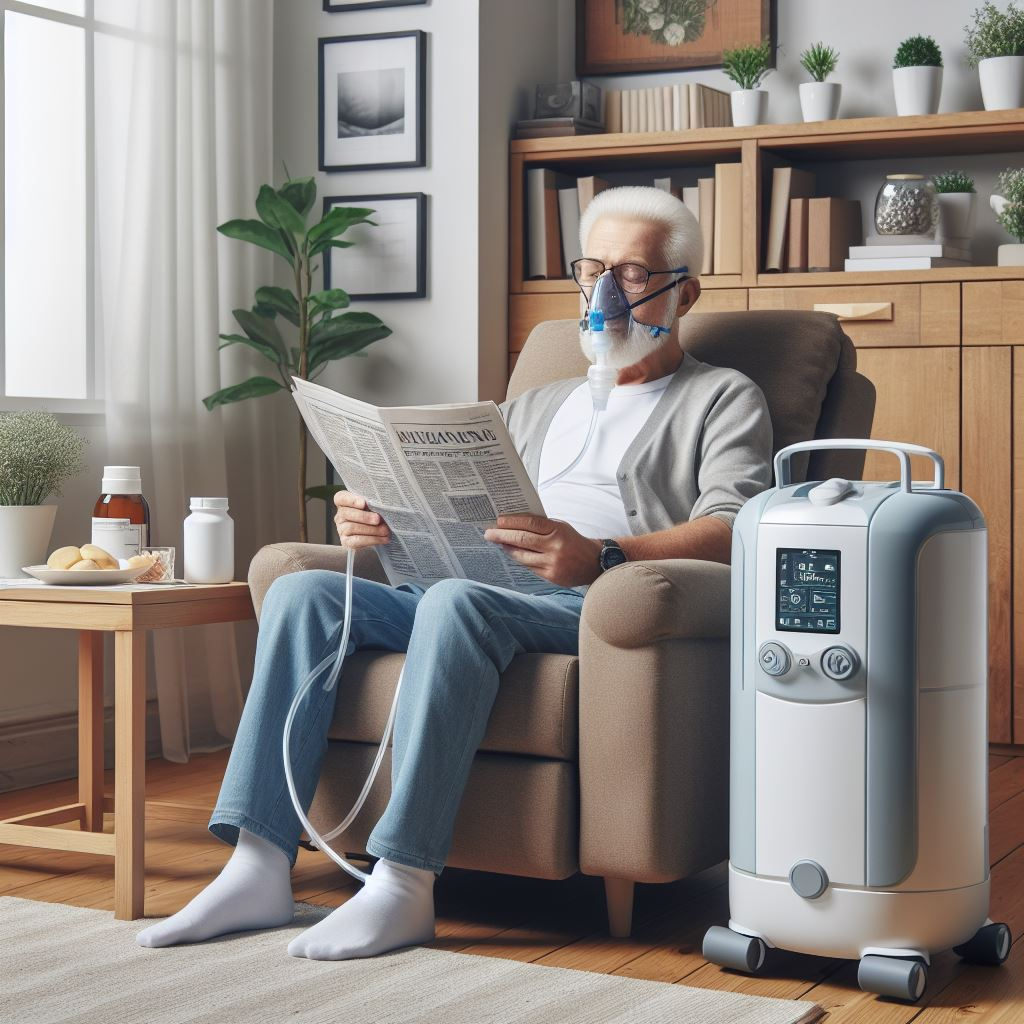As we wrap up our Aging in Place theme for May, it’s important to reflect on one of the most crucial aspects of ensuring a comfortable and fulfilling life for our loved ones: regular health checkups and managing chronic illness. At Your Nurse Advocate Consulting, we are dedicated to empowering seniors and caregivers with the knowledge and resources needed to thrive at home.

The Vital Role of Regular Health Checkups
Regular health checkups play a pivotal role in detecting early signs of chronic illnesses, which can make all the difference in effective management and improved quality of life. Early detection allows for timely intervention, preventing complications and enabling seniors to maintain their independence.
As nurse advocates, one of the areas we can help our families is to put plans in motion to age in place. It is crucial to have all the healthcare needs determined along with the appropriate treatment plans. This can only be accomplished with regular check-ups and identifying any chronic health conditions that as time goes on will factor in the aging loved one’s ability to continue to age in place.
In drafting a plan to age in place, we need to consider all the healthcare needs. Do we have to account for home modifications based on future need? As a chronic health condition continues what changes will need to be made to the plan? By understanding the healthcare needs we can logically predict what future healthcare needs may look like and get you and your family prepared for them.
Statistics reinforce this narrative: seniors who consistently attend their health checkups are more likely to catch conditions early, thus reducing hospitalizations and improving their overall well-being.
Statistics highlight the impact: According to the Centers for Disease Control and Prevention (CDC), nearly 80% of older adults have at least one chronic condition, and 68% have two or more. Routine checkups can significantly reduce the risk of severe health issues by catching them early.
Real-life example: An 84-year-old woman, diagnosed with Alzheimer’s Disease wanted to age in place for as long as possible. Her husband asked that we put the plans in place for her to stay home with him.
It didn’t take us long to determine the course of the illness and what needed to be done for her to safely age in place. Home modifications included locks, alarms, window locks, locks on cabinets and her medications. The plan eventually turned into 24/7 caregivers in the home, a village of volunteers and many things were coordinated from companion visits by church family and neighbors as well as meals being brought in. It was a bit undertaking but we were able to get it accomplished.
Our knowledge and expertise in understanding the chronic health condition allowed us to advise the family on the future next steps throughout her care and her aging in place.

photo created with the assistance of CoPilot
Proactive Management of Chronic Conditions
Proactively managing chronic conditions can greatly enhance the quality of life for seniors aging in place. This involves not only adhering to prescribed medications but also making lifestyle changes and utilizing therapies that support overall well-being.
Benefits include:
- Better management of symptoms
- Reduced need for emergency care
- Improved physical and mental health
- Enhanced ability to engage in favorite activities
Take Mr. Johnson, a 75-year-old man suffering from heart disease. By adhering to his medication regimen and regularly consulting with his healthcare team, he has significantly improved his heart function. Today, Mr. Johnson continues to lead an active lifestyle, enjoying activities he thought he’d have to give up.
Early interventions can include lifestyle changes such as diet modifications, regular exercise, and mental health support. These proactive steps can mitigate the progression of chronic illnesses and promote a healthier, more fulfilling life.
Clinics have home monitoring programs for such chronic diseases as congestive heart failure, chronic obstructive lung disease, diabetes, high blood pressure and more. Telehealth has made it much easier to get access to providers and specialists right from your own home especially for those that live in a rural area.
Barriers to Accessing Healthcare for Seniors
Despite the importance of regular checkups, seniors often face barriers in accessing healthcare. Common challenges include:
- Mobility issues: Difficulty in traveling to medical appointments.
- Financial constraints: Limited income affecting the ability to afford treatments.
- Lack of awareness: Not knowing about available resources and services.
Despite the clear benefits, many seniors face barriers to accessing regular healthcare. Common obstacles include mobility issues, financial constraints, and lack of transportation.
To overcome these barriers, it’s important to leverage available resources:
- Telehealth Services: Many healthcare providers now offer virtual consultations, making it easier for seniors to get the care they need without leaving their homes.
- Community Programs: Local organizations often provide transportation services and financial assistance for medical appointments.
- Home Health Services: In-home care options can bring medical professionals directly to seniors, ensuring they receive the necessary checkups and treatments. There are both Skilled and Non-Skilled home care depending on the needs. A nurse advocate can help determine which type of home care is the most appropriate.
- Community Medical Transportation Services. Many areas of the country have taxi cab services that can accommodate wheelchairs and charge the same amount as a cab service. Otherwise there are medical transportation services to accommodate people with disabilities or handicaps.
- Financial assistance programs: Exploring Medicare, Medicaid, and community support programs. Each county in every state has a government agency to support the needs of our aging and elderly.
- Education and advocacy: Informing seniors and caregivers about their options and rights. Knowing your options and what aging in place will look like for you and your family will go a long way in making your wish to age in place become a reality.

Creating a Comprehensive Health Management Plan
Developing a personalized health management plan is essential for successful aging in place. This plan should include:
- Regular Check-ins with Healthcare Providers: Schedule routine appointments to monitor health status and adjust care plans as needed.
- Medication Adherence: Ensure that medications are taken as prescribed, possibly with the assistance of pill organizers or reminder apps.
- Healthy Lifestyle Choices: Encourage balanced diets, regular physical activity, and mental wellness practices.
- Assessment: Evaluate current health status and needs.
- Goal setting: Establish both short-term and long-term health goals.
- Action plan: Outline steps to achieve these goals, including medication adherence, lifestyle changes, and regular checkups.
- Monitoring: Keep track of progress and adjust the plan as needed.
- Support system: Involve healthcare providers, family, and friends to ensure comprehensive care.
Regular check-ins with healthcare providers are crucial in this process, as they help in monitoring progress and making necessary adjustments.
The Role of a Supportive Healthcare Team
A collaborative care model is vital for providing comprehensive support to seniors. It really takes a village. This team can include doctors, nurses, specialists, therapists and, importantly, Your Nurse Advocate.
A supportive healthcare team is indispensable in the journey of managing chronic illnesses while aging in place. At the heart of this team is Your Nurse Advocate, who provides:
- Coordination of care: Ensuring all healthcare providers are on the same page.
- Personalized advice: Tailoring recommendations to the individual’s needs.
- Emotional support: Offering compassion and understanding to both seniors and caregivers.
- Access to resources: Connecting families with essential services and programs.
Our role at Your Nurse Advocate is to help identify the needs, create a plan, coordinate care, ensuring that all aspects of a senior’s health are addressed. We work closely with families to develop and implement care plans that meet the unique needs of each individual.
We follow up and assess if the plan is working or we need to make some modification based on the changing healthcare needs.

Real-life Examples of Successful Chronic Illness Management
Case Study 1: Diabetes Management
An 82-year-old woman diagnosed with diabetes has maintained her health and independence through regular checkups, dietary changes, and consistent monitoring. Her proactive approach has allowed her to avoid severe complications and live a fulfilling life at home.
Her daughter wanted her to take a more active role in her healthcare management and continue to live a long and healthy life for as long as possible.
Her goal was to age in place at home with her daughter and son-in-law. We assessed her needs and what was most important to her and then put a plan in place with goals and action items to achieve success.
Case Study 2: Heart Disease Management
A 75-year-old man with heart disease improved his heart function through medication adherence and regular consultations with his healthcare team. His commitment to managing his condition has enabled him to stay active and enjoy his daily activities.
We assisted in the navigation process of adjusting to home oxygen as well as new medications.
Having an advocate alongside him gave him the accountability he needed to move forward and follow through on his plan to achieve his goals. We were able to give him and his family insights they were not aware of and the education they needed to feel confident and empowered to make the right decisions for his ongoing healthcare needs.

Conclusion
As we conclude our May theme on Aging in Place, it’s clear that regular health checkups and proactive management of chronic illnesses are vital for seniors wishing to maintain their independence and quality of life. By overcoming barriers to healthcare and developing comprehensive health management plans, seniors can thrive in their own homes.
With the support of a dedicated healthcare team and a personalized health management plan, seniors can enjoy a higher quality of life and peace of mind.
We invite you to subscribe to our newsletter for more health tips and support from Your Nurse Advocate. Together, we can ensure that aging in place is not only possible but also enriching and empowering.
Thank you for joining us on this journey, and we look forward to continuing to support you and your loved ones.
Let’s work together to ensure that every senior has the opportunity to thrive while aging in place.
Your Nurse Advocate Consulting is here to guide you every step of the way. Stay informed, stay healthy, and cherish the moments that matter most.
Take care and we will see you back here soon!
Pam and Linda
Your Nurse Advocates
“Compassionate care for aging parents, peace of mind for the adult children.”
Resources:
Your Nurse Advocate Consulting Free Resources
Are You Ready to Learn More About Consulting Services?
https://www.nia.nih.gov/about/budget/reducing-chronic-disease-and-disability-0
https://www.nia.nih.gov/health/aging-place/aging-place-growing-older-home





